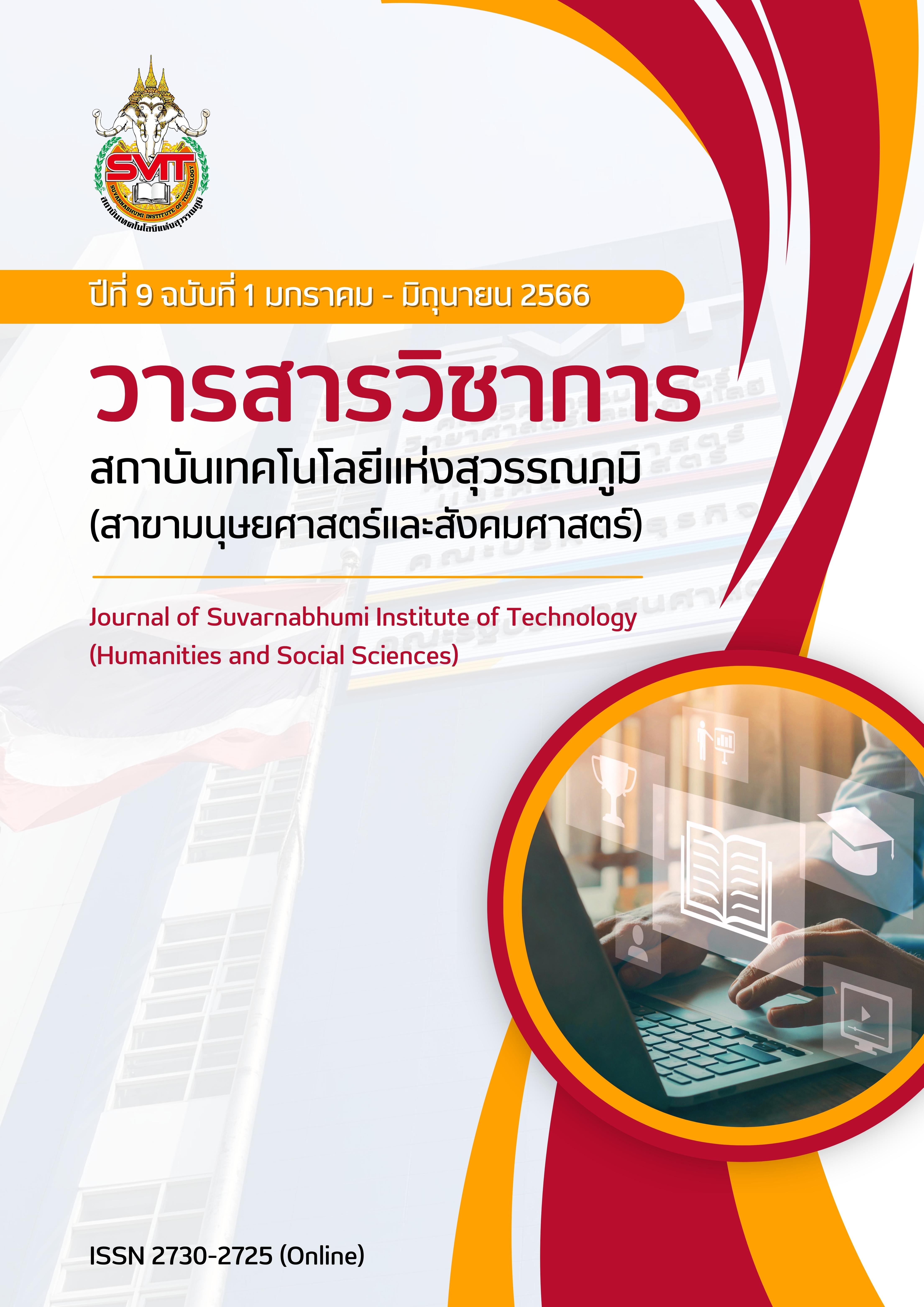RISKS OF HUMAN CAPITAL MANAGEMENT IN THE DIGITAL AGE
Keywords:
Management risk, Human capitalAbstract
This academic article aims to To study risks in human capital management in the digital age By using the method of synthesizing documents and related research, 3 main issues are as follows. 1) Human Capital Concepts and Management 2) Human Capital Risk in the Digital Age 3) Human Capital Risk Management in the Digital Age. The results of the study concluded that Human capital is a valuable and vital resource. in the use of business resources including money, materials, equipment, machinery and management processes in work. In addition, human beings are creative and able to invent new innovations. It can be seen that managing human capital under digital transformation poses inevitable risks to organizations. Both political, economic, social, including management risks. Finance and Regulatory, Rules, Laws. Therefore, in managing human capital risks in the digital age, significant advancements in technology should be considered. and taking into account the production of goods and services cost reduction development Increasing efficiency in responding to customer needs This makes the level of competition much higher. As a result, every organization has to adjust itself to survive. This is to develop an efficient human capital resource management process. Effective for the organization in the digital age, including being able to improve the structure and manpower appropriately. enough to meet the needs. Therefore, human capital must be developed in the digital age to be concrete in driving operational strategies within the organization. So that personnel can develop their potential in various fields and can be applied to further work and encourage systematic and continuous development of competency.
References
Altman,. W. (2021). Turning into the talent. engineering & technology 8 march - 21 march 2008. pp. 74-79.
Dickmann, M,. (2019). A European perspective on HRM: an introduction. International human resource management: a European perspective. London: Rutledge pp. 3-18.
Farndale, E. & Scullion, H. (2018). Global talent management in professional and financial service firms: The changing role of the corporate HR function.
Holbeche, L. (2020). Aligning Human Resources and Business Strategy. Butterworth- Heinemann.
Hossam M. Abu Elanain. (2019). Job characteristics, work attitudes and behaviors in a
non-western context. ournal of Management Development, Vol. 28 Iss 5 pp.
– 477
Kozuka, S. (2019). A governance framework for the development and use of artificial intelligence: lessons from the comparison of Japanese and European initiatives. Uniform Law Review, 24(2): 315-329.
Kovner et al. (2019). Developing and managing talent: A blueprint for business survival. London: Thorogood. International Journal of Human Resource Management, 24 (9): 1777-1798.
Locke, R. and M. Romis. (2019). Improving work conditions in a global supply chain. MIT Sloan Management Review (Winter): 54-62.
Mellahi, K., y Collings, D.G. (2020). The barriers to effective global talent management: the example of corporate élites in MNEs. Journal of World Business, Vol.45 No.2, pp.143-149.
Moorman, R. H. (2021). Relationship between organizational justice and organizational citizenship behaviors: Do fairness perceptions influence employee citizenship?.
Journal of applied psychology, 76(6), 845.
Russ-Eft, Darlene. (2018). A Typology of Training Design and Work Environment Factors Affecting Workplace Learning and Transfer. Human Resource Development Review 1: 45–65.
Silva, GA. (2018). A New Frontier: The Convergence of Nanotechnology, Brain Machine Interfaces, and Artificial Intelligence. Frontiers in Neuroscience 2018; 12: 1–8.
Stenner, Karen. (2021). Conflict Avoidance and Political Participation. Cambridge: Cambridge University Press.
Sheehan, M. (2018). Global human resource management and economic change: a multiple level of analysis research agenda. International Journal of Human Resource Management, 23 (12): 2383-2403.
Swanson, R.A. (2021). Human Resource Development and its Underlying Theory. Human Resource Development International. 4(3) PP.299-312.
Taulli T. (2019). Implementation of AI. In: Artificial Intelligence Basics. California: Apress; 2019. pp. 143-159.
Usmani, S., & Jamal, S. (2021). Impact of distributive justice, procedural justice, interactional justice, temporal justice, spatial justice on job satisfaction of banking employees.
Review of Integrative Business and Economics Research, 2(1), 351.
Vough, H.C., Bataille, C.D., Sargent, L. and Lee, M.D. (2021), Next-Gen Retirement, Harvard Business Review, Vol. 94 No. 6, pp. 104-107.
Walker, James. (2019). Human Resource Management. Wiley Periodicals, Inc., 9 (1), 38– 42
Wilson, H. J. and P. R. Daugherty. (2019). Creating the symbiotic AI workforce of the future. MIT Sloan Management Review (Fall): 1-4.
Zatzick, C. D. and R. D. Iverson. (2019). High-involvement management and workforce reduction: Competitive advantage or disadvantage?. The Academy of Management Journal 49(5): 999-1015.
Downloads
Published
Issue
Section
License
Copyright (c) 2023 Suvarnabhumi Institute of Technology

This work is licensed under a Creative Commons Attribution-NonCommercial-NoDerivatives 4.0 International License.
บทความที่ได้รับการตีพิมพ์เป็นลิขสิทธิ์ของวารสารวิชาการ สถาบันเทคโนโลยีแห่งสุวรรณภูมิ
ข้อความที่ปรากฏในบทความแต่ละเรื่องในวารสารวิชาการเล่มนี้เป็นความคิดเห็นส่วนตัวของผู้เขียนแต่ละท่านไม่เกี่ยวข้องกับสถาบันเทคโนโลยีแห่งสุวรรณภูมิ และคณาจารย์ท่านอื่นๆในสถาบันฯ แต่อย่างใด ความรับผิดชอบองค์ประกอบทั้งหมดของบทความแต่ละเรื่องเป็นของผู้เขียนแต่ละท่าน หากมีความผิดพลาดใดๆ ผู้เขียนแต่ละท่านจะรับผิดชอบบทความของตนเองแต่ผู้เดียว





